Text
Zuko is Autistic
Since I made a post a while ago claiming that Zuko was autistic, some people have been asking for the “proof.” It seems fitting for me to provide said proof now, since it’s autism acceptance month. I’m going to try to be as comprehensive as I can, but if anyone has anything to add, feel free to do so! That said, please do not come on here to tell me that Zuko is not autistic. This is my headcanon, and these are all the things about Zuko that I relate to as an autistic person.
Alright, buckle up, kids, because Zuko is autistic af and I’m coming with all the receipts - and there are a lot of them.
Let’s start from the beginning. A lot of austistic people develop tactics early on that help us to ‘pass’ as allistic. When unsure of how to act in certain social situations, Zuko tends to mirror Azula. When he was younger, he was shown copying her sense of humor.
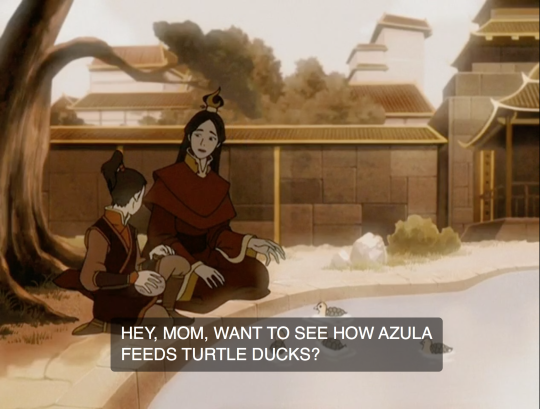
He threw a rock at a baby turtle duck and laughed, saying that this is how Azula feeds turtle ducks. Because Azula thought it was funny, he assumed his mom would think it was funny, too. It wasn’t until Ursa asked, “Why would you do that?” that Zuko even considered it might not be universally funny.
Zuko is shown laughing at things Azula thinks are funny more than once as a child. If Azula is not laughing directly at Zuko, he usually joins in on the laughter, even if he doesn’t understand the joke.
Another time Zuko tried to copy Azula was after she demonstrated her skills to their grandfather, Fire Lord Azulon. Zuko immediately attempted to demonstrate his own skills, even though he was not prepared.
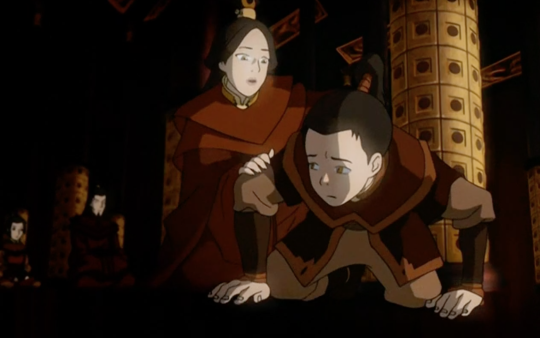
Another thing that some autistic people struggle with is fine motor skills. When Zuko tried to prove to his grandfather that he was as skilled as Azula, he tripped both times he attempted to fire bend. He has obviously improved since that moment, but it took him a long time to do that.

“You have yet to master your basics. Drill it again.”
Zuko was at sea for three years with Iroh, seemingly doing nothing but training to get strong enough to capture the avatar. After three years, he was still working on his basics, as Iroh points out. Other benders have been shown to become masters much quicker than Zuko. Katara became a waterbending master after one episode. Aang mastered all four elements in the span of about a year. By the age of 12, Toph was already an earthbending master, and she taught herself. Zuko has had to work a lot harder than them to properly control his fine motor skills. It isn’t until he’s mastered his basics that he is able to progress as a bender.
Since Ozai was obviously not the most supportive parent, Zuko may have had to figure out other ways to hide his autism.
Another tactic he used was to practice social interactions before they happened. In this scene, he is shown giving a practice performance to a frog:
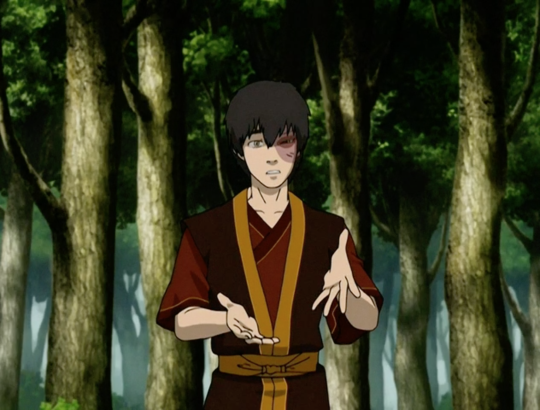
“The thing is, I have a lot of fire bending experience, and I’m considered to be pretty good at it. Well, you’ve seen me. You know, when I was attacking you?”
Obviously, this practice session was necessary, because Zuko said plenty of things here that could have easily further escalated the situation.
Even while using tools like mirroring or practicing social interaction, we all have moments where things might just feel a little off to allistic people.
Empathy
A lot of autistic people feel empathy differently than allistic people. Some of us might not feel empathy, some might experience hyper empathy, and some might just have a hard time expressing empathy. I suspect Zuko is leaning towards low empathy, or has trouble expressing empathy.
Exhibit A:
“My first girlfriend turned into the moon.”

“That’s rough, buddy.”
Notice how Zuko found it easier to talk about himself. He answered Sokka’s questions about Mai, and the conversation was moving along smoothly. It wasn’t until Sokka shared personal information about himself that Zuko seemed to be out of words.
Exhibit B:

Toph just told Zuko that her parents gave her everything she ever asked for, but not the one thing she really wanted: their love.
Zuko spends half of this conversation looking the other way. When he does look at her, notice his expression. He probably has no idea why she is telling him this, so he doesn’t know how to respond. And on top of that, he was under the impression that they were supposed to be looking for Aang.
A lot of autistic people have what you might call a one track mind (which I’ll get more into later). It’s hard for us to switch focus from one thing to another.
Toph wanted to partner with Zuko because she wanted a life changing field trip, but Zuko just wanted to find Aang. He was able to have ‘life changing field trips’ with Aang, Katara, and Sokka because he was actively focused on helping them with their specific problems. He had time to mentally prepare to help them. There was careful planning involved in each of those missions. He can’t help Toph in this moment, because her problem is conflicting with the problem they already have: finding Aang.
In both of the examples above, Zuko acknowledges the hardships that Sokka and Toph went through. “That’s rough buddy” and “I know you had a rough childhood.” This may be his way of trying to show compassion, even though it might come across as cold.
Zuko takes things at face value
Catching things like sarcasm, body language, metaphors, and ‘reading between the lines’ can be difficult for autistic people. This also gives us a reputation for being gullible, because it can be difficult to tell when someone is lying without being able to read the cues.
The first and most obvious example of this is what Zuko’s entire arc revolves around:
Capturing the Avatar
Ozai had just fought his own son, a 13 year old, in an Agni Kai. He burned Zuko’s face, intentionally causing permanent damage, and then banished him. All of this because Zuko spoke out of turn. At the time that Zuko was banished, the Avatar hadn’t been spotted for over 100 years.
Knowing all of that, it seems likely to me that Ozai was being cruel and sarcastic when he said that Zuko could come back after capturing the Avatar. It would be like saying “when pigs fly,” since at that point the Avatar was thought to have been gone forever.
Iroh, of course, knows this. That’s why in the beginning of the series, he kept reminding Zuko that the Avatar had not been seen in 100 years. He didn’t want Zuko to get his hopes up. Zuko, however, spends every minute for three years training to fight the avatar, and the second he sees something out of the ordinary, he automatically assumes that it is the the avatar’s doing. It’s kind of a miracle that he was right.
Capturing the Avatar = restoring honor. This is an example of both taking what his father told him as fact, and seeing things as black and white, which is also commonly associated with autism. Ozai told Zuko that capturing the avatar would restore his honor, so Zuko became obsessed with finding and capturing Aang. He truly believed that doing so was the only way to restore his honor and return home. It took Zuko years to realize that he could restore his honor in a different way than what his father told him.
He automatically believes Azula when she says he can come home
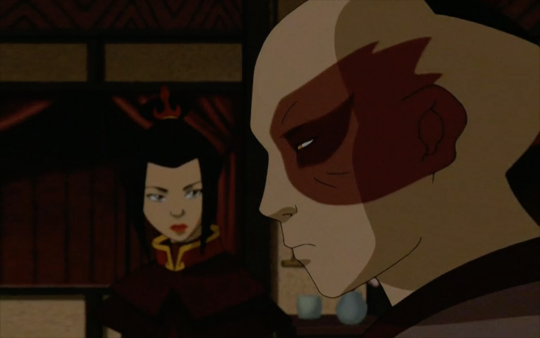
“Father regrets?”
It had been three years since he’d seen Azula, and he immediately took what she said at face value. He is excited to be going home, and he is frustrated with Iroh for being skeptical. When Iroh points out that he has never known Ozai to regret anything, Zuko says “did you even listen to Azula?”
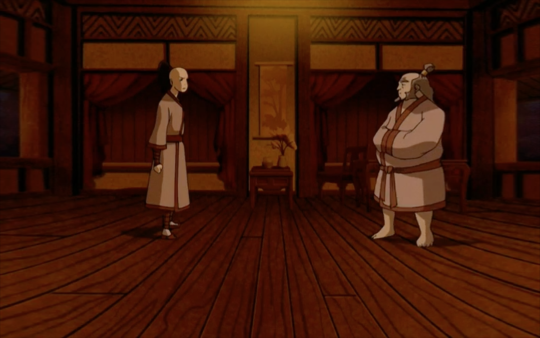
Zuko takes what Azula says as fact, just like he has always done. This is why, as a child, he had to constantly tell himself, “Azula always lies,” because she probably had a habit of fooling Zuko. But now that it has been so long, without the constant reminder that Azula always lies, she takes advantage of the fact that Zuko trusts her so easily, and he falls for her lies once again.
He doesn’t catch on to Jin’s body language
In the episode ‘The Tales of Ba Sing Se,’ Zuko meets a girl named Jin. He immediately is threatened by her, because she keeps looking at him (eye contact is another thing that can be a challenge for autistic people). He assumes she knows they are fire nation. Despite the fact that he has seen her constantly smiling at him, he is completely surprised when he finds out she has a crush on him.
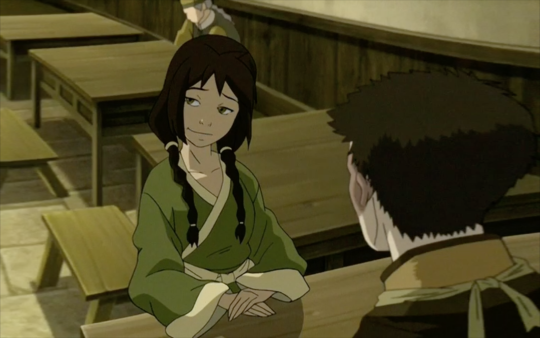
When Jin asks Zuko on a date, he shows up looking like this:
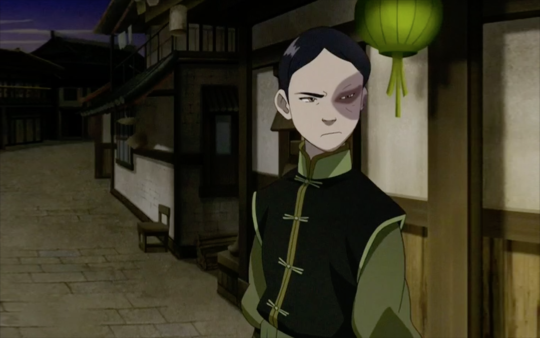
I think most people would catch on that this is Not A Good Look. But when Jin messes up his hair, Zuko gets frustrated. He says, “It took my uncle ten minutes to do my hair!”
So, Iroh told him this was a good hairstyle, and Zuko trusts Iroh, so he took his word as truth, and went along with it.
Later on in the date, Jin tries to kiss Zuko. Just before their lips touch, he holds a coupon in front of her face, exclaiming that he brought her a gift.

Zuko likes Jin. He risked a lot to light up the fountain for her. We know he wanted to kiss her, because when she kissed him later, he let her, and he even kissed her back for a moment before he bolted. But in this moment here, he missed the signs that said she was about to kiss him (the hand holding, Jin closing her eyes, leaning forward, etc), so he moved the conversation along in a way that he felt was natural, by giving her a gift.
He doesn’t realize that Sokka and Suki want time alone
Zuko runs into Suki when he’s about to go into Sokka’s tent. She’s clearly embarrassed, but Zuko doesn’t catch on.

“Sorry, do you need to talk to Sokka, too?”
Suki says no, so Zuko enters Sokka’s tent, to find Sokka like this:
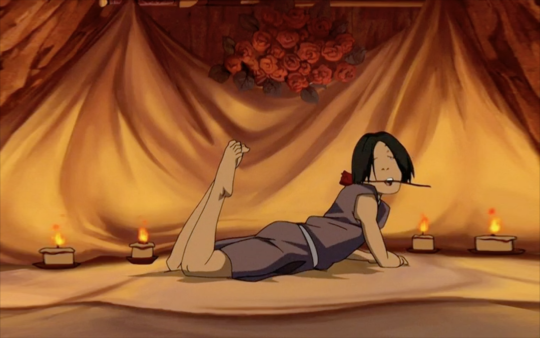
There are roses everywhere, candles are lit, Sokka’s hair is down, he’s posing. Sokka was waiting for Suki to arrive, not Zuko.
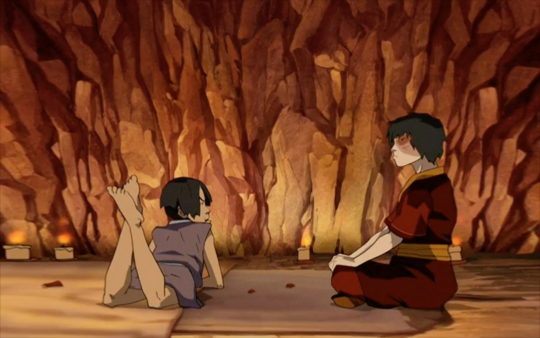
But Zuko doesn’t catch on to that, either, so he sits right down and asks Sokka for advice, totally oblivious to what was supposed to be going down.
He can’t explain what is ‘off’ about Azula
A lot of autistic people have trouble recognizing patterns. Zuko has known Azula his whole life. He knows what her hair usually looks like. He knows what her makeup usually looks like. She doesn’t usually have dark circles under her eyes. She usually has better posture. I could go on.
Azula challenged Zuko to an Agni Kai looking like this:

“I can’t explain it, but there’s something off about her.”
This is something I struggle with, too. If my mom dyes her hair, I can tell something is different, but it may take me a few days to figure out exactly what has changed. I think this is what was going on with Zuko here. He knows something is up, but he can’t immediately recognize that Azula has cut her own hair poorly, or that her makeup is different because she did it herself, or that she has dark circles under her eyes, or weird posture, etc.
Sensory issues
Sensory issues are also associated with autism. This can manifest in sensory overload and strong reactions to physical contact, among other things.
One way I’ve learned to avoid or come down from sensory overload is to self-isolate and meditate, which is something Zuko does very often. This can also be a way to recharge spoons or mentally prepare for something that might be exhausting.

This explains why Zuko would react so strongly when someone interrupts his alone time. He needs that time to prepare for every other moment in the day. When this time is interrupted, he lashes out, and has trouble containing his emotions.

Physical contact
Zuko doesn’t always seem to know how to react to physical contact and affection. He reacts negatively if he isn’t prepared, or if he isn’t comfortable with the person. Even if he genuinely likes the person who is touching him (Jin, Iroh, Toph, Katara, etc), he still doesn’t seem to know what to do.

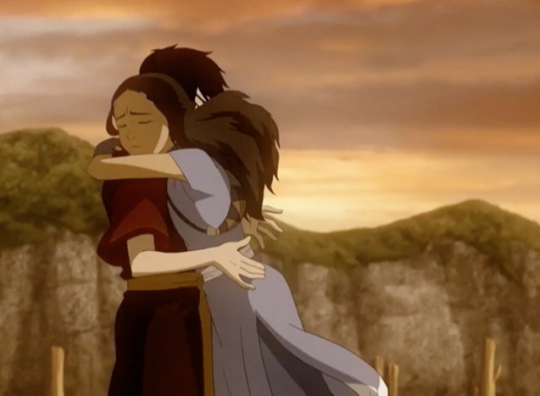

If Zuko is comfortable with the person who hugs him, he allows them to do so, but he still almost always looks flustered. He doesn’t always hug back, and when he does, it sometimes takes him a moment to process that he’s being hugged before he is able to return the gesture.
Difficulty Changing Plans
As I mentioned before, autistic people sometimes have a one-track mind. We may have difficulty changing plans, and may tend to see things as black and white, with no gray areas. All of these things describe Zuko to a T.
Zuko tends to get frustrated over any change of plans, but there’s one example I’d like to focus on.
Let’s talk about that angst coma. You know, that time Zuko got physically ill after he did something that completely altered the course of his life?

That’s the one. The thing is, change is hard. And it can be especially hard for autistic people. Zuko spent the last few years working towards one thing, and one thing only: capturing the avatar. Then, in one day, everything changed. He made a decision to free Appa, which was completely counter to what he has been working towards this entire time.
I’ve had “angst comas” before, and I know other autistic people who have had similar experiences. Sometimes you really do just need a few days in bed to recuperate and adjust to big changes.
some side notes that are worth mentioning:
Zuko takes Iroh’s metaphors literally
He repeats Iroh’s metaphors without understanding them, and they come across differently
It took him a minute to realize when Aang insulted him, because the insult was dressed up like a complement. “Hey, that was actually pretty smart of you.” Zuko’s first reaction is to smile proudly at the praise.
That scene when Aang wants to sit by Katara (bc he likes her) and Zuko is all, “I don’t get it, what’s the big deal? Just sit next to me.”
He saved Iroh’s smelly sandal when he was separated from him
He has a special interest in dao swords
Inaccurate self image (in his imagination he pictured himself without his scar)
He replays memories in his head of times when he thinks he may have said the wrong thing
He has meltdowns when things don’t go as he plans.
He sometimes messes up jokes when he’s trying to be funny
He paces back and forth a lot, perhaps as a way to stim
In conclusion Zuko is autistic af. I rest my case.
75K notes
·
View notes
Text
Zuko from Avatar: The Last Airbender is Autistic!

42 notes
·
View notes
Text
i think it's funny that the best type of representation for autism is the type that is completely unintentional. feels more natural.
4K notes
·
View notes
Text
I’m actually crying over KB’s storyline in the newest episode of Skeleton Crew.
As someone who was the kid with disabilities, it sucked. You were always the one being left behind, the one working twice as hard just to keep up. You feel guilty for making your friends change how they do things to accommodate you but also a little angry because they should want to make things easier for you, because they’re your friends!! And sometimes people decide your friendship isn’t worth giving up their way of doing things, and that friendship fades into nothing.
KB pointed out that Fern not acknowledging her disability and treating her “like everyone else” was actually the opposite of her being a good friend. But Wim also pointed out that KB never expressed that to Fern due to her own fears that Fern won’t be her friend anymore (probably due to losing the rest of her friends post-accident).
I just think is SUCH an important message to show kids - that sometimes being treated equally isn’t actually equal treatment. Sometimes you have to have compassion and understanding for your friends who aren’t as able-bodied as you, and that it’s okay for disabled kids to speak up about their needs.
1K notes
·
View notes
Text
Things I Learned Watching Skeleton Crew:
The way to make a good Star Wars spinoff is to just make a story that draws from the genres Star Wars is built from.
Star Wars is a fairy tale, not a fantasy. It feels most like Star Wars when you've got regular people living their mundane lives who go on adventures where they just get glimpses of a more magical reality.
Treasure Island in space is always a great idea.
A villain with a lightsaber is a great idea, especially when no one else has a lightsaber.
When you start binging a show, make sure it's actually complete, and not one episode from the end, if you don't want to go crazy.
592 notes
·
View notes
Text
Jod being trained for only a little bit (most likely in the aftermath of Order 66) explains now why the only thing he ever really does with the Force is float things (and not even particularly heavy things, I’d like to point out).
I was wondering why he never pulled out a Jedi Mind-TrickTM at any point or why he kept getting snuck up on, why he never could pick up when a situation was about to turn sour. He only ever levitates or shoves things, he doesn’t even do the extra high and far jumps or other faster-than-the-average-person runs or spins or anything. He doesn’t even do the casual acrobatics Jedi just do!
But it makes perfect sense now!
He only had a little bit of teaching before the Jedi woman who found him was hunted and killed. And we saw in Rebels with Ezra how long it took to master the mind-trick and other connection based abilities, but the levitating objects was one of the very first things he picked up.
(Ezra could also do the jumping thing before training but Ezra’s special, okay? And Lothal itself has a lot of Force stuff going on so I take it that boasted his abilities early on.)
This also explains why Jod recites some Jedi-adjacent phrases (like the attachments stuff and the “your focus determines your reality” line). They’re things he heard her say and what’s interesting is that he still holds the spirit of some of the Jedi teachings to a degree (there are always lines he just pulls back from crossing, like he’s shown to be ruthless and even brutal yet he doesn’t physically harm the children).
I just find this so interesting: a Force-sensitive kid found by a Jedi after Order 66 but left largely untrained because their master was killed and taken from them too soon.
350 notes
·
View notes
Text
What's interesting to me about Jod and his relationship with the kids by the end of the series is that it's so in-between.
It's not "actually I've come to care for these kids and I will give up my plan to protect them" but it's also not just that he's evil and doesn't care about them.
He does betray them and he does a lot of harm. He threatens them and their families and their home in a very genuine and traumatic way. He brings destruction and danger down on their home. He does not make the turn to help them or side with them against the other pirates. He stays on his course, stays a bad guy.
But at the same time, as much as he threatens them (in the pirate horde, in the ship and on At Attin) and their family, he doesn't actually hurt them. (in fact I think the only ones we see him actually physically hurt are 1. SM-33. 2. The werewolf pirate guy 3. the supervisor droid). And I don't know that the threats are empty, but he's certainly very reluctant to actually enact that violence, and his plan might not have fallen through if he had been more willing to hurt them. He's not willing to stop for the sake of the kids, but he'd much rather get through his plan without harming them. And when he KB is falling and he thinks she probably died there is real fear and regret in his face. He didn't want that.
All of this is an outpouring of his misguided worldview. Because again, Jod isn't a villain who can't recognize right and wrong. He knows what Good is, he's seen it. But his problem is despair so he believes that Good is not worth it, and is not powerful enough to make a difference. And because of that he becomes the manifestation of the cruel place he believes the world to be. The good in him is THERE but its not strong enough to really change him, but it's because his despair doesn't believe it can be. And so he becomes the very thing that made him-- he watched his mentor/parental figure killed in front of him, and he stands there threatening to do the same thing to Wim and Fern.
But he doesn't, because he isn't quite the villain that the Empire represents. Even though the difference doesn't come from him actively making a choice for Good, it does come from there being Good still in him, even just in the form of hesitation. Good is still powerful even when he's denying it. And then little ember in him is not what saves the day--that's the kids and their families and the New Republic. But it is there and it does mean that even though he stays a villain there is that moment of Wim calling out to him, there is still that spark of hope that Jod can be saved one day too.
335 notes
·
View notes
Text
Another thing I haven't seen people discussing about Skeleton Crew is how it's kind of teaching kids to develop critical thinking skills instead of blindly believing whatever they're told just because an adult/someone they like or trust said it. At the beginning of the show, Wim takes Jod at his word because he's an adult who apparently can use the Force. Wim is so sheltered that his only experience with adults has been that they're automatically trustworthy and always tell the truth. That combined with his idolization of the Jedi primes him to trust Jod on sight, ignoring Fern's repeated warnings until Jod decides to betray them.
After that, he starts to think for himself and figures out that the X-Wings Jod once said were bad are actually the good guys, and we see him moving away from his previously naive mindset that had him hanging off of Jod's every word without question. In an age where anyone can influence anyone else to believe whatever they want them to thanks to the bane of human decency the Internet, this is such an important lesson to weave into a story for younger viewers. It is literally impossible to shelter them from every crumb of nonsense floating around in the world. So stories like this where relatable kid characters have to undergo a journey of disillusionment aren't just a good idea, they're a necessity. Not everyone you look up to has your best interests at heart. Sometimes they have ulterior motives for wanting you to think a certain way. Sometimes they alter details to suit their own agenda while pretending to be an advisor, confidant, or friend. Sometimes they flat out lie to serve themselves. You have to take what you're told with a grain of salt, filter out personal confirmation bias, and properly vet who's passing on the information (and their possible motives for doing so) to determine whether or not their words can be trusted.
Again, I'm so impressed with the work the writers have done on this series. I think everyone (including myself) who wants to write for young audiences regardless of medium needs to be paying close attention and taking mental notes. This is how you correctly educate and entertain at the same time
201 notes
·
View notes
Text
i’m so pleased that jod turned out to be Just Some Guy who happens to also be force sensitive. we so rarely get stories about regular people in the galaxy who are also force sensitive, and not associated with the jedi or another force-wielding group. i’m sure in a galaxy that big, there are plenty of force-sensitive beings who go undiscovered, or are never able to make their way to a force-sensitive group. and to see a regular guy be force sensitive and use it for “evil” (lying/manipulation, thieving, other pirate-y things etc etc), and that not be related back to the sith either, was also really refreshing. like jod’s personal association with the jedi comes solely from the fact that it happened to be a jedi who found him as a child on the streets. other than that he has no personal stake in the jedi, no jedi link in his own history, and in a fictional world that does center around jedi and the force (which is not a bad thing!), it was really nice to see a different kind of force-user story.
311 notes
·
View notes
Text
What's interesting to me about Jod and his relationship with the kids by the end of the series is that it's so in-between.
It's not "actually I've come to care for these kids and I will give up my plan to protect them" but it's also not just that he's evil and doesn't care about them.
He does betray them and he does a lot of harm. He threatens them and their families and their home in a very genuine and traumatic way. He brings destruction and danger down on their home. He does not make the turn to help them or side with them against the other pirates. He stays on his course, stays a bad guy.
But at the same time, as much as he threatens them (in the pirate horde, in the ship and on At Attin) and their family, he doesn't actually hurt them. (in fact I think the only ones we see him actually physically hurt are 1. SM-33. 2. The werewolf pirate guy 3. the supervisor droid). And I don't know that the threats are empty, but he's certainly very reluctant to actually enact that violence, and his plan might not have fallen through if he had been more willing to hurt them. He's not willing to stop for the sake of the kids, but he'd much rather get through his plan without harming them. And when he KB is falling and he thinks she probably died there is real fear and regret in his face. He didn't want that.
All of this is an outpouring of his misguided worldview. Because again, Jod isn't a villain who can't recognize right and wrong. He knows what Good is, he's seen it. But his problem is despair so he believes that Good is not worth it, and is not powerful enough to make a difference. And because of that he becomes the manifestation of the cruel place he believes the world to be. The good in him is THERE but its not strong enough to really change him, but it's because his despair doesn't believe it can be. And so he becomes the very thing that made him-- he watched his mentor/parental figure killed in front of him, and he stands there threatening to do the same thing to Wim and Fern.
But he doesn't, because he isn't quite the villain that the Empire represents. Even though the difference doesn't come from him actively making a choice for Good, it does come from there being Good still in him, even just in the form of hesitation. Good is still powerful even when he's denying it. And then little ember in him is not what saves the day--that's the kids and their families and the New Republic. But it is there and it does mean that even though he stays a villain there is that moment of Wim calling out to him, there is still that spark of hope that Jod can be saved one day too.
335 notes
·
View notes
Text
"When I was your age, all I cared about was not starving. I was living in a hole in the ground, and a Jedi found me. She may have been desperate and ragged like me, but she told me I had potential. And that was…Well, she only taught me a little before they hunted her down. And they made me watch whilst they killed her." Just thinking about how, even in this Jedi's darkest hour, even when she was as run thin and desperate as a starving kid on the streets, even when she was being hunted down just for existing, this Jedi still saw a starving kid and took him under her wing, still told him he was worth something, still taught him about not hurting innocent people. This Jedi would have had so little left to her, but still saw someone she could help and took the chance. That this is who the Jedi are--even when they're ragged to the bone, they still look to help others, they still look to care for a kid they find on the street that they can teach things to, they still care so much about a kid that probably had no one who ever cared about him before, that her effect on Jod's life STILL shapes who he is. He tries so hard to be a murderous pirate who doesn't care about anyone, but you can see that he never actually wants to hurt anyone innocent and even lets his plans go down in flames rather than truly attack any of the parents or the kids. This Jedi may not have been with Jod for long, but even decades later, you can still see the echoes of how much she meant to him, how her loss shaped him, but also how her philosophy still rings in his ears.
845 notes
·
View notes
Text
Jod Na Nawood’s backstory is FASCINATING!! And makes SO much sense!!! Order 66 fucked up SO much in the galaxy, it’s so interesting (and tragic) to see what it’s done to the force sensitive children who were unable to be taken into the Temple. It truly supports how GOOD the Jedi Order is. How good the JEDI are. I can’t even fully comprehend everything the galaxy lost and suffered without them. And- Jod’s master. She didn’t have to take him in. He knew that. He knows she was desperate. But she took him in anyway and taught him what she could. We only get a very tiny glimpse of that backstory but it’s utterly gut-wrenching.
Imagine the survivor of a genocide. A Jedi on the run, desperate and hungry and grieving, running into a little kid just as lost as her and seeing that LIFE in him. Feeling the FORCE in him. What would that have done to her after feeling everyone she knew and loved ripped away from her. But here is this kid and he needs help and maybe she does, too. Maybe they can help each other. And so she folds him under her wing just as any Jedi would have done. She teaches him the ways of her people, knowing that their way of life lives on in her and that she is passing it on to a new generation. And that probably hurt. It probably hurt SO much. Because she can’t give him what she could have if the Order was still alive. And he’ll never understand what it means to be part of something so beautiful and long-lasting. But she does what she can, and they maybe never would have met if Order 66 didn’t happen. And it’s an awful thought, the worst kind of thought, but she can’t help but be relieved they found each other. Because she loves this lost little kid and maybe they’re broken together, but they’re more whole together, too. And maybe without Jod she could have run and hid forever. Maybe she couldn’t have, plenty Jedi were caught and murdered. But she knew the risk and she took it- and the way Jod talks about it (“they made me watch”) makes me think that he feels he’s responsible for her getting caught. And it makes me wonder how she felt when she was caught. Knowing she was one of the last of her kind, and that this kid was going to be alone again. Orphaned in a completely new, terrible way.
And I wonder, too, if looking after the kids reminded Jod of his old Jedi Master. And maybe he thought “I can’t get attached because then they’ll catch me too and I’ll die just like her.” And you know what, Jod? It did happen that way. You got caught because of those kids. But only because you forgot what it means to be a Jedi, which is to say that after your Master died you tore out that softness within you. Abandoned love for fear. Exchanged generosity for greed. And it’s true grief and trauma changes people. That a little kid alone in the galaxy does what they can to survive. But Jod isn’t a little kid anymore and it doesn’t excuse the choices you make. It’s a wretched world, one without a Jedi, and Jod suffered all the more for it.
And I wonder, too, what Jod thought when Wim paused in the elevator. When that little kid called out to him, despite everything Jod had done to him. Did Jod look at Wim and think: “Yeah, that’s what a Jedi would be” and then hate himself all the more for it? Well, who can tell. Jod is a fascinating character and I’m excited to see where the show next takes us.
804 notes
·
View notes
Text

Smou

Strurni

Karpina

Eira

Tepun

Kestrul

Serrhou

Dren
1 note
·
View note
Note
Xanatos Speed Chess as a trope?
Tends to be more impressive than the Xanatos Gambit, since it requires a cunning and quick-thinking mind on the character’s part, and also shows they have the foresight to acknowledge that something unexpected could happen that may force them to alter their plans.
11 notes
·
View notes
Photo
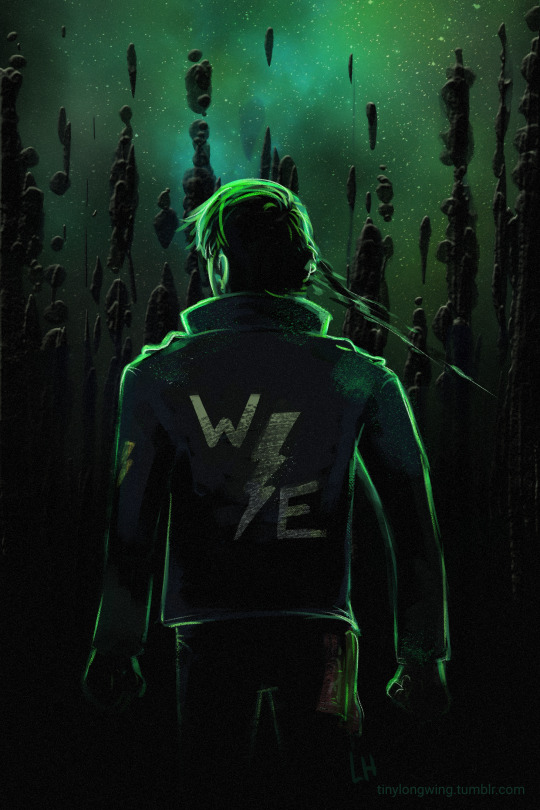
I step back from the edge of a pure black void, muttering ancient names in forgotten tongues
303 notes
·
View notes
Text
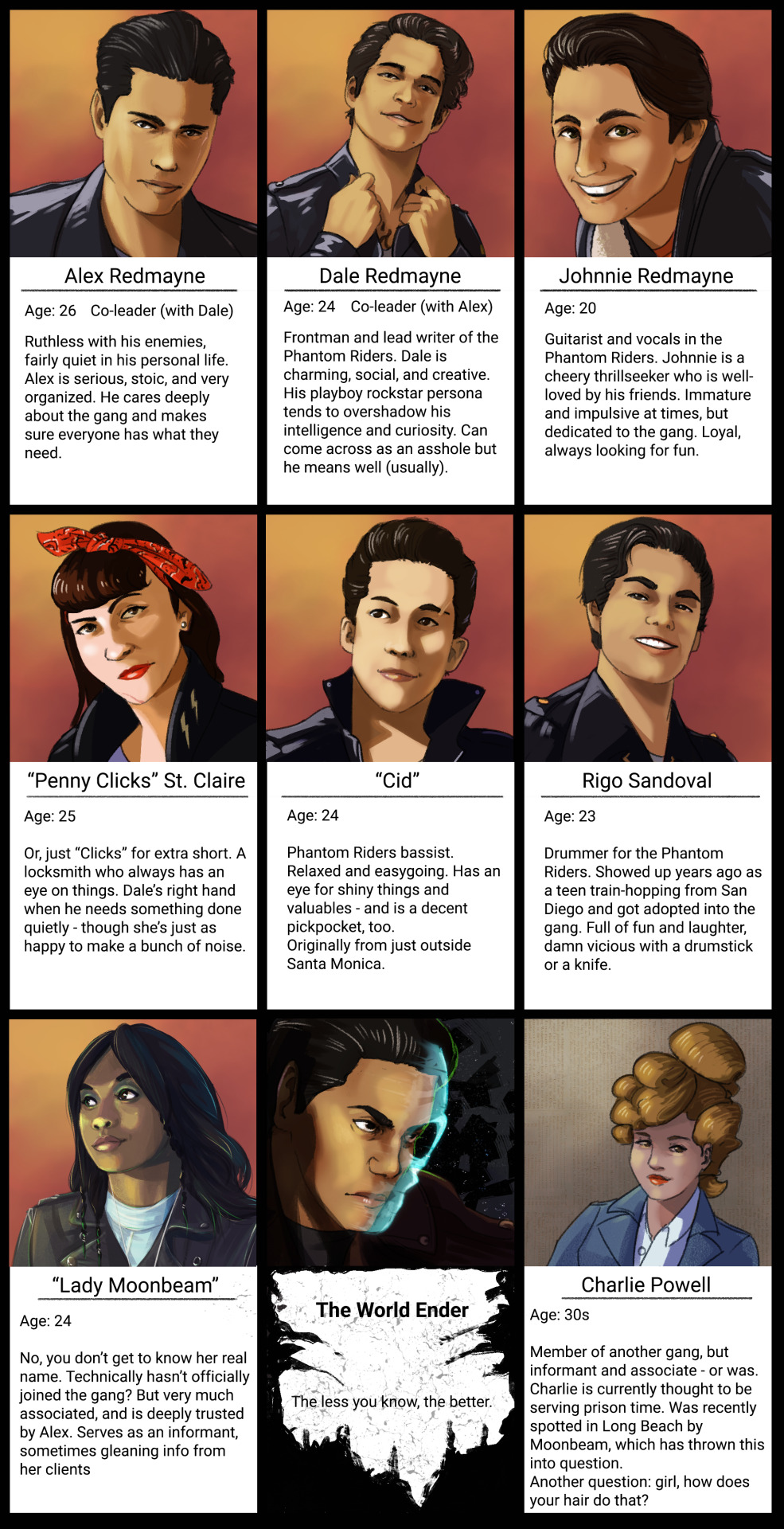

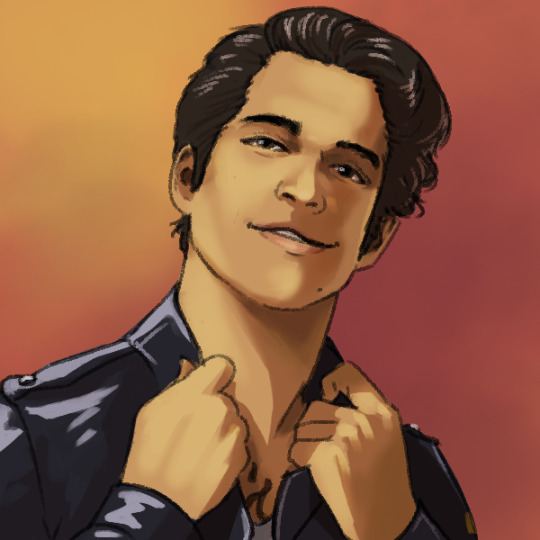
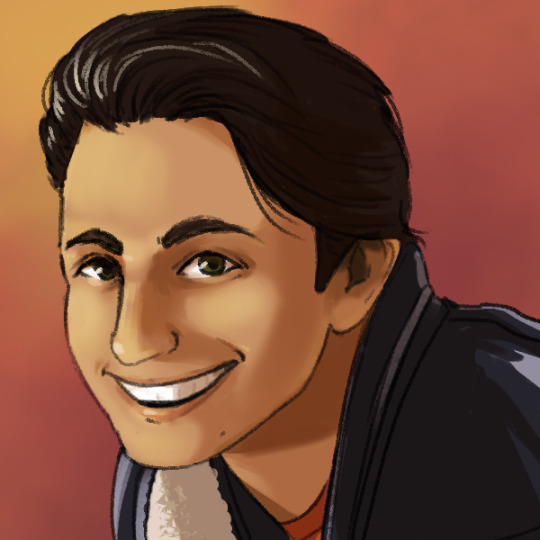
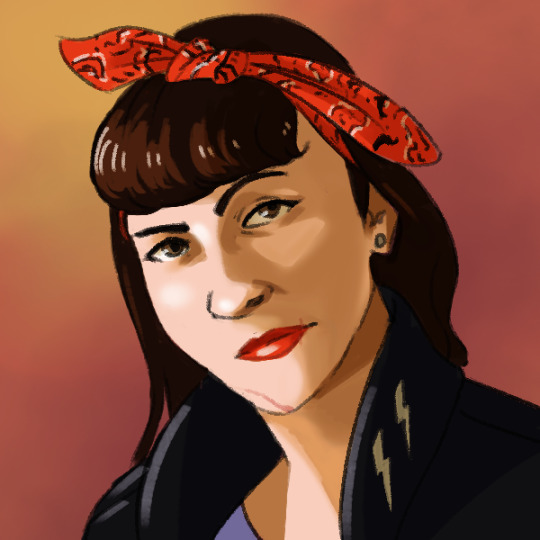

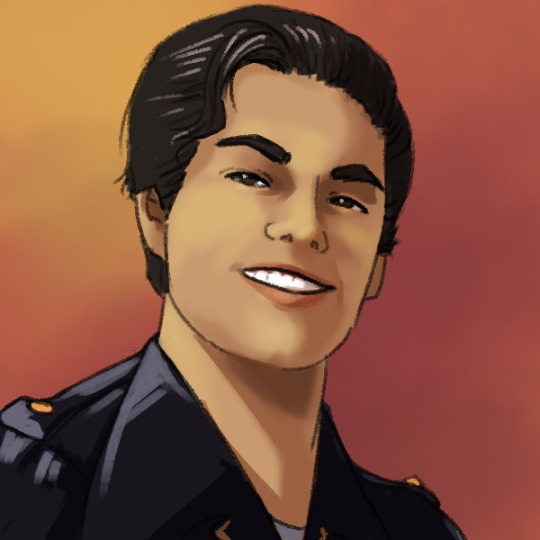

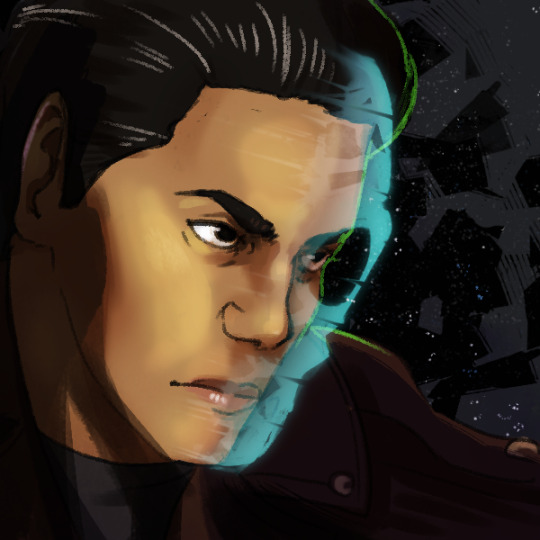
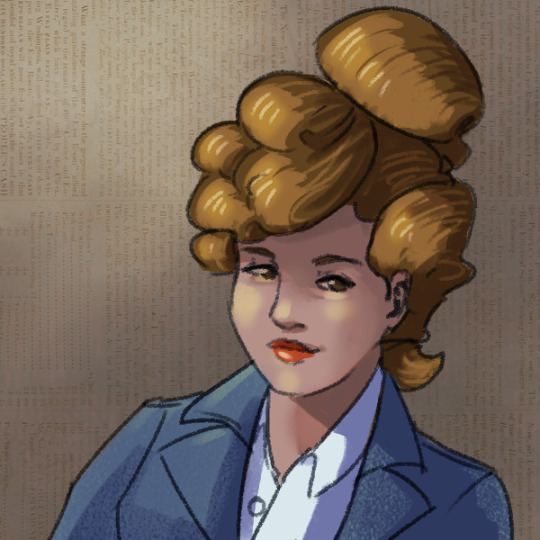
Part 1 of my silly self-indulgent personal project to do a bunch of portraits of the World Enders (and I guess a couple other related characters). This set is all canon characters.
PLEASE NOTE that like while there's plenty here that's canon as far as names and sometimes faces go, a LOT of the info is part of a collaborative RP/writing project with @spectromagic so like, please don't take all of this as solid fact, just enjoy the cute and very simple little portraits, haha.
I'll do a part 2 or even 3 eventually but those will almost all be OCs we've used to fill out the gang. These folks at least you might have heard of from the band themselves! (Honestly Charlie is only here because she's named in canon and had a namedrop in what we've written so far unlike some of the other canon folks who we haven't really used like Tender Freddie or Jimmy Doll).
109 notes
·
View notes
